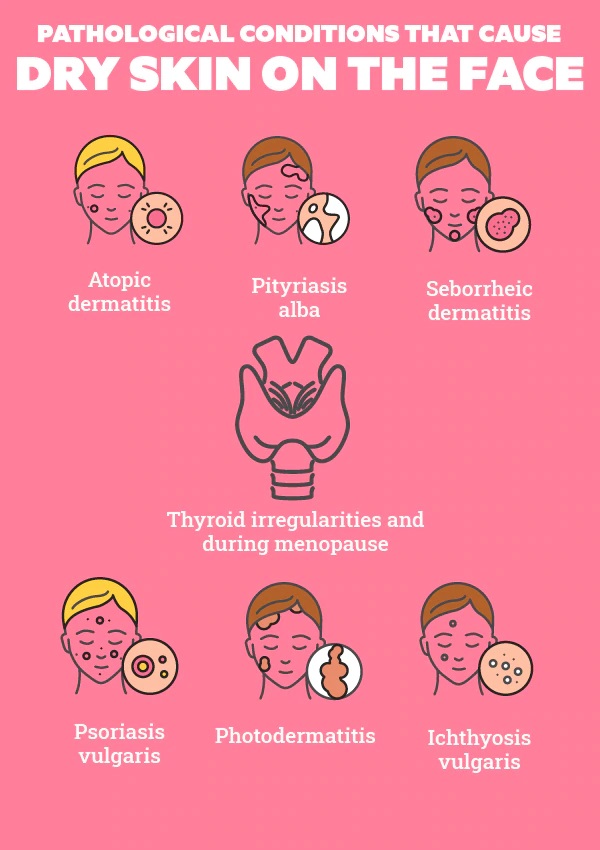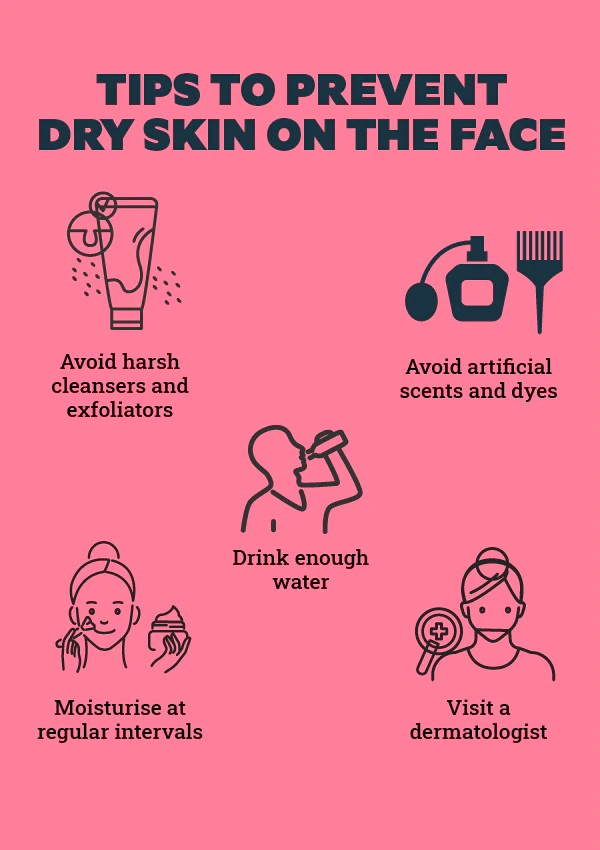Dry skin is a skin type and requires more nutrition compared to normal, oily or combination skin. However, skin dryness is a problem that can affect any skin type. It is mainly induced by environmental factors and can make your skin feel flaky or stretchy. If you’ve dealt with or are dealing with dry skin on your face, you’ll know firsthand what it looks like to your skin. Not only does it look dull, but the fluffiness makes it impossible to put makeup on as it ends up looking blotchy.
Visit For More: Best Skin Whitening Cream In Pakistan

We understand your ordeal. For some, this problem may only appear in winter, for others, it may also be due to an underlying problem. Whatever the reason, we’re here to help you get rid of dry skin. According to the well-known dermatologist and skin, an expert at Biocospk can have dry skin physiological and pathological reasons. Physiological factors related to the genetic origins of the skin, so you have to deal with dry skin all year round, regardless of the season. If the problem is pathological, it means that dry skin is the result of a clinical condition. Here are some clinical conditions that can be responsible for dry skin.
- Cause Of Dry Skin On The Face
- How Do You Treat Dry Skin On The Face?
- Be Gentle
- Choose The Right Ingredients
- Avoid Hot Water Baths
- Consider Skin Treatments
- Tips Against Dry Skin On The Face
- FAQs About Dry Skin On The Face
1. Cause Of Dry Skin On The Face

I. Neurodermatitis:
Atopic dermatitis is a severe form of eczema that makes the skin red, itchy, and irritated. It can sometimes crack and bleed the skin. This type of dry skin condition occurs in areas such as the face, elbows, and behind the knees.
II. Pityriasis Alba:
A common skin condition characterized by red, scaly patches of skin on the face. These patches usually heal by making the patch appear lighter than the natural skin tone of the individual.
III. Seborrheic Dermatitis:
Although this condition is more common in the scalp area, it can sometimes develop on the face. It makes the skin on your face dry, flaky, and itchy.
IV. Photodermatitis:
Long exposure to the sun can cause skin rashes, this is called photodermatitis. The rash can appear on any part that has been exposed to the sun’s rays, making it dry.
V. Psoriasis Vulgaris:
A skin condition that causes red, itchy, scaly patches of skin that are common on the knees, elbows, and scalp. However, sometimes dry skin can also occur on the face.
VI. Ichthyosis Vulgaris:
Another pathological skin condition is ichthyosis Vulgaris. It is a skin condition where the individual’s skin becomes dry and flaky. It occurs when the skin doesn’t shed dead skin cells naturally. The accumulation of dead skin cells on the surface of the skin leads to this condition.
VII. Thyroid Irregularities And During Menopause:
Dry skin on the face is also common in menopausal women and women who are low on thyroid hormone. Women have more dry skin than men due to genetic differences in the skin, such as thickness and other anatomical differences.
Move your face! Face yoga for tight skin
2. How do you treat dry skin on the face?

Depending on how mild or acute your problem is, dry skin on the face can be treated with a number of different options. The basic roadmap remains the same as if you followed a CTM routine and applied sunscreen, but the formulation and ingredients change.
I. Be Gentle

Dry skin on your face indicates your skin is sensitive, and one wrong move will result in red, irritated, or itchy skin. To avoid this, clean your face with a mild cleanser that does not contain harsh chemicals that can further irritate the skin. One with neutral pH and active ingredients like lactic acid will come in handy. Also, avoid detergents that are loaded with artificial fragrances, as this can cause itching and irritation. If the skin on your face is too dry, wash it only once at night to avoid excessive dryness.
II. Choose The Right Ingredients

In addition to avoiding certain chemicals and ingredients, it is also important to include products with nourishing ingredients in your skincare regimen. Choose one gently cream-based cleanser followed by an alcohol-free toner with naturally soothing ingredients like rose water. Choose a cream-based moisturizer that is easily absorbed by the skin. Some ingredients to look out for when buying moisturizers are ceramides, urea, and should be oil-based like an emulsion. Sunscreens are also available in different designs. opt for a cream-based product with moisturizing properties instead of a gel-based one.
III. Avoid Hot Water Baths

Taking a hot water bath may be very relaxing, especially in winter, but hot water draws moisture out of your body and makes it more prone to dryness and flaky skin. Take a lukewarm bath and wash your face with lukewarm or cold water to avoid dry skin. Also, limit your bath time to just over ten minutes. If you stay in the water for too long, your skin can dry out.
IV. Consider Skin Treatments

Aside from the above options, you can also consider skin treatments from a dermatologist to remove dry skin on your face. The Hydra facial is a dual-action technique. One wand extracts dead skin cells, dirt, and other impurities from the skin, while the other infuses the skin with soothing and nourishing ingredients like hyaluronic acid. Another way to treat dry skin on your face is to use the Best Skin Whitening Cream In Pakistan boosters. As the name suggests, moisturizing boosters are injected into the skin to treat dry skin and keep it looking healthy.
Unlock the Secrets of Ageless Skin with Natural Face Moisturizer
3. Tips Against Dry Skin On The Face

I. Avoid Harsh Detergents And Exfoliants:
Whether it is the skin of your face or the skin on your body, treat it gently. Avoid detergents with harsh ingredients and scrubs that contain large particles or pearls.
II. Drink Enough Water:
Drink enough water and fluids throughout the day to keep your skin hydrated from the inside. When your body is dehydrated, no amount of moisture will help with dryness.
III. Avoid Artificial Smells And Colors:
Choosing skincare products based on their smell and colour will leave your dry skin drier from artificial scents and dyes. Instead, opt for products that are free of these.
IV. Moisturize At Regular Intervals:
It is not enough to moisturize your face and body once in the morning, especially if you have really dry skin. To help curb dry skin on your face, carry a moisturizer in your pocket and reapply it from time to time.
V. Visit A Dermatologist:
If you have a skin condition that causes dry skin, you should see a dermatologist regularly to keep the condition under control. For more Click here.
4. FAQs About Dry Skin On The Face

I. Why Do I Suddenly Have Dry Skin On My Face?
Dry skin can be due to many factors. Weather and temperature changes are the most common. However, an allergic reaction or the use of harsh chemicals can also lead to dry skin. If your skin doesn’t feel better after using moisturizers, it may be due to a skin condition that needs to be checked by a dermatologist.
II. Does Drinking Water Help With Dry Skin?
When your body is dehydrated, your skin may feel dry. However, this is not always the case. When you are drinking enough water and still feeling like your skin is dry, it’s time to consider other factors that can be causing it.
III. What To Eat To Prevent Dry Skin?
Foods that are high in natural oils and healthy fats can be very beneficial for dry skin. Include fatty fish, nuts, avocados, broccoli, tomatoes, sunflower seeds, etc. in your diet to treat dry skin on the face.